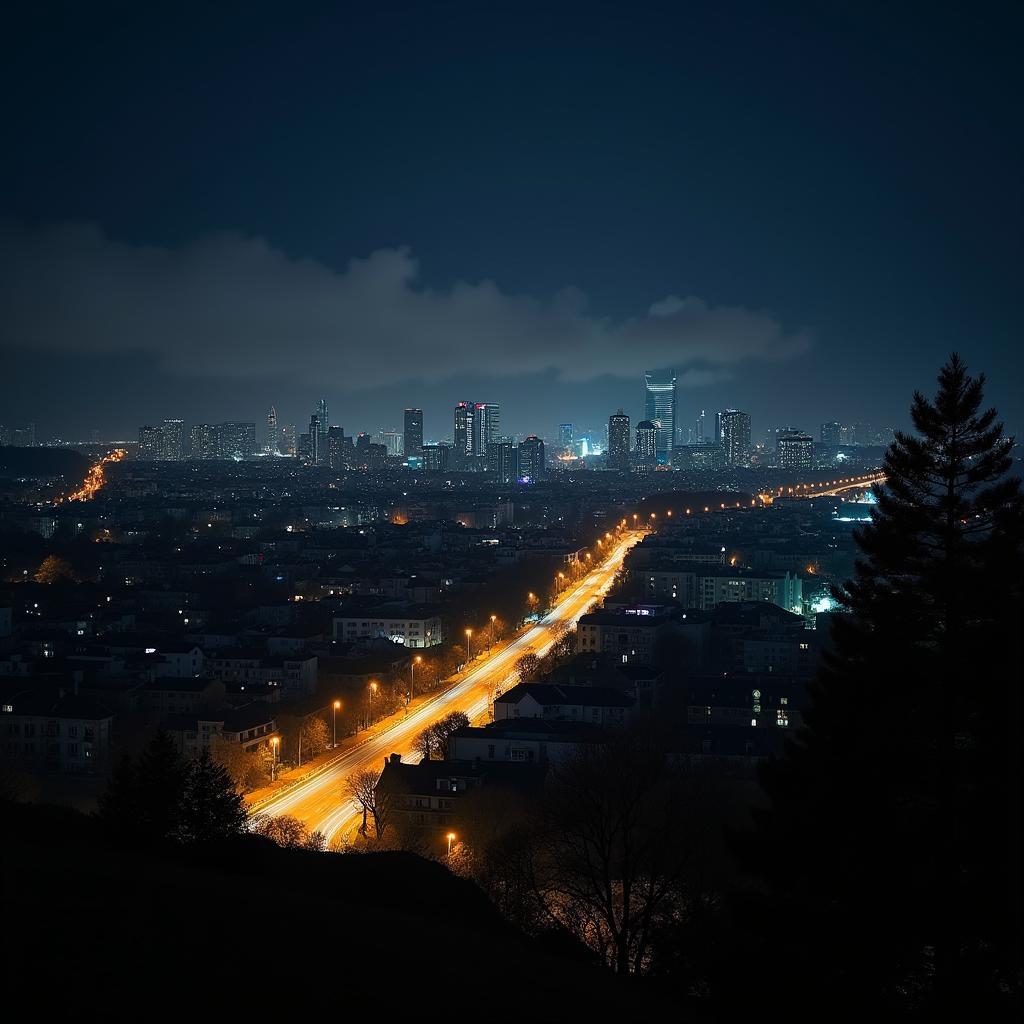Light pollution has become an increasingly common topic in IELTS Writing Task 2, appearing in various forms across recent test papers. Based on analysis of past exams and current environmental trends, this environmental issue is likely to appear more frequently in future tests. Let’s examine a recent task question and explore sample responses across different band scores.
The challenges of reducing energy consumption shares similar environmental concerns with light pollution, as both issues require behavioral changes and policy interventions.
Task Analysis
Some people believe that light pollution is a growing environmental problem that needs to be addressed urgently. To what extent do you agree or disagree with this statement? Give reasons for your answer and include relevant examples from your own experience.
Key Requirements:
- Express opinion on light pollution as an environmental issue
- Evaluate urgency of addressing the problem
- Provide supporting reasons and examples
- Structure response in agree/disagree format

Sample Essay (Band 8-9)
Light pollution has emerged as a significant environmental challenge that demands immediate attention, and I strongly agree that urgent measures are needed to address this growing problem. This essay will examine the serious implications of excessive artificial lighting and discuss why swift action is crucial.
Firstly, light pollution severely disrupts natural ecosystems and wildlife behavior. Artificial lighting interferes with nocturnal animals’ hunting patterns and confuses migratory birds, leading to population decline in various species. For instance, sea turtle hatchlings often become disoriented by coastal lighting, preventing them from reaching the ocean. Additionally, excessive artificial light disrupts plant growth cycles and pollination patterns, affecting entire food chains.
Similar to how impact of noise pollution on mental health affects human well-being, light pollution also has significant health implications for humans. Exposure to artificial light at night disrupts our circadian rhythms, potentially leading to sleep disorders, increased stress levels, and even higher risks of certain cancers. Urban residents particularly suffer from these effects, as city lighting often prevents them from experiencing natural darkness.
Moreover, the energy waste associated with unnecessary lighting contributes significantly to carbon emissions and climate change. Just as should governments impose stricter penalties for environmental pollution, authorities need to implement strict regulations on lighting usage. Cities worldwide waste billions of dollars annually on excessive lighting, resources that could be better allocated to sustainable development projects.
In conclusion, light pollution represents a serious environmental threat that requires immediate intervention through both policy changes and public awareness campaigns. The consequences of inaction could be severe for both wildlife and human health.
Sample Essay (Band 6-7)
I agree that light pollution is becoming a serious environmental problem that needs quick action. This essay will discuss the main reasons why this issue is important and needs to be solved soon.
Light pollution causes many problems for both nature and people. When there is too much artificial light at night, it affects animals and plants in bad ways. For example, many birds get confused by bright city lights and crash into buildings. Also, some insects that usually come out at night cannot survive because of too much light.
Just like Should non-essential flights be discouraged to protect the environment, we need to think about how our actions affect the environment. Light pollution wastes a lot of electricity, which means more power plants need to run and create more pollution. This makes climate change worse and costs cities lots of money.
Furthermore, too much light at night is bad for people’s health. It makes it hard to sleep well and can cause stress. In big cities, many people cannot see the stars anymore because of bright lights everywhere, which is sad because seeing stars is important for human culture and science.
In conclusion, I strongly believe that light pollution is a big problem that needs to be fixed quickly. Governments and people need to work together to reduce unnecessary lighting and protect the environment.
Key Vocabulary
- Light pollution (n) /laɪt pəˈluːʃn/ – excessive or inappropriate artificial light
- Circadian rhythm (n) /sərˈkeɪdiən ˈrɪðəm/ – physical, mental, and behavioral changes that follow a 24-hour cycle
- Nocturnal (adj) /nɒkˈtɜːnl/ – active at night
- Migratory (adj) /ˈmaɪɡrətri/ – moving from one area to another at different seasons
- Artificial lighting (n) /ɑːtɪˈfɪʃl ˈlaɪtɪŋ/ – man-made light sources
High-Scoring Sentence Patterns
- “Not only does light pollution affect wildlife, but it also impacts human health.” (Correlative conjunction)
- “Given the severity of its environmental impact, immediate action must be taken.” (Complex sentence with dependent clause)
- “The more artificial light we produce, the less connected we become to the natural world.” (Comparative structure)
Remember to practice writing your own essay on this topic and share it in the comments section for feedback and improvement suggestions.